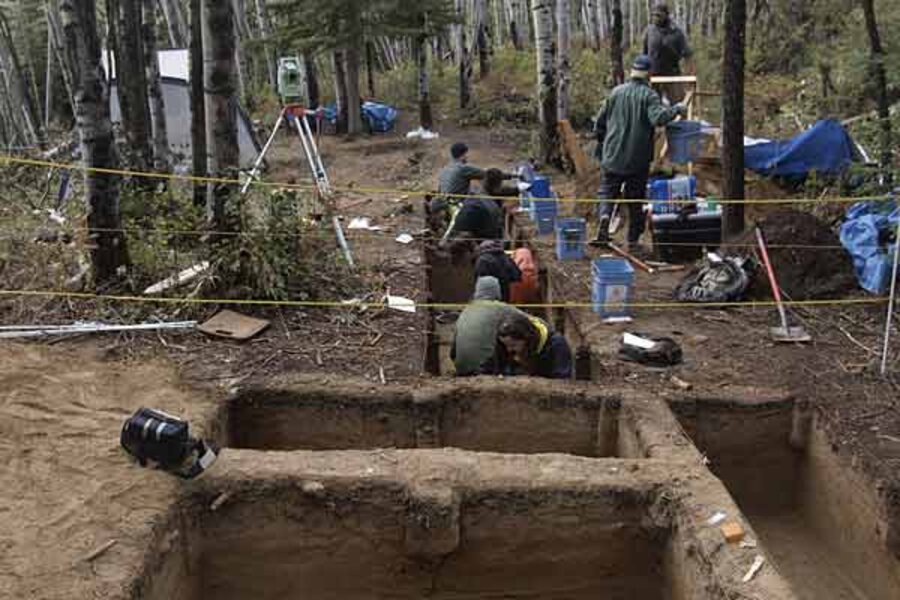Ice Age child discovered in Alaskan wilderness
Loading...
The 11,500-year-old cremated remains of child discovered in Alaska are the oldest human remains found in the far north of North America and the second-youngest Ice Age child ever found on the continent, scientists say.
The burial site and house, which were unearthed during an excavation last summer that was led by University of Alaska Fairbanks archeologists, are also the oldest ever found in arctic or subarctic North America, scientists say.
The find, which is detailed in Friday's issue of the journal Science, were uncovered on what was supposed to be the last day of the excavation season near the Tanana River in central Alaska, said Ben Potter, the University of Alaska Fairbanks archeologist leading the project.
"Almost immediately, I could tell this was human," Potter said in an interview with Reuters. "The clincher was the presence of a molar, a human molar. That's about as obvious as it gets."
Signs of human habitation on Alaska date back to about 14,000 years ago, but discoveries of actual human remains are extremely rare, Potter said.
The discovery was a breakthrough for the Native Athabascan people of the region as well as for scientists, tribal leaders say.
Joann Polston, first chief of the Healy Lake Traditional Council - the tribal government closest to the site - said she was "amazed" when she saw the excavated pit and the outline of the child's body.
"I felt very reverent and very honored," Polston told Reuters. "I felt like I was looking into someone's grave site, and instantly felt that this little one had a lot to say."
Her tribal government has been given some responsibility to oversee the remains. The tribe selected a name for the child -- Xaaxaa Cheege Ts'eiin, meaning "Upward Sun River Mouth Child" - from the local dialect.
A traditional memorial service is being planned.
But the lineage of the Ice Age child, whose gender is unknown, is yet to be determined. Experts involved in the project acknowledge that the child could be related to any of the Native American ancestors who passed through interior Alaska as populations spread over the continent in that era.
"My goodness, 11,500 years is a long time to trace anyone's ancestral tree," Polston said.
Work to examine genetic material has begun, Potter said, but it is uncertain whether any DNA can even be extracted. If it can, there is already a volunteer offering a DNA sample for a potential match.





